- Home
- Robin Cook
Cure
Cure Read online
a cognizant v5 release august 27 2010
Table of Contents
Title Page
Copyright Page
Dedication
Epigraph
Acknowledgements
Chapter 1
Chapter 2
Chapter 3
Chapter 4
Chapter 5
Chapter 6
Chapter 7
Chapter 8
Chapter 9
Chapter 10
Chapter 11
Chapter 12
Chapter 13
Chapter 14
Chapter 15
Chapter 16
Chapter 17
Chapter 18
Chapter 19
Chapter 20
Chapter 21
Chapter 22
Chapter 23
Chapter 24
Chapter 25
Chapter 26
Chapter 27
Chapter 28
Chapter 29
Chapter 30
Chapter 31
Chapter 32
Chapter 33
Chapter 34
Chapter 35
Chapter 36
Chapter 37
Chapter 38
Chapter 39
Chapter 40
Chapter 41
Chapter 42
EPILOGUE
ALSO BY ROBIN COOK
Intervention
Foreign Body
Critical
Crisis
Marker
Seizure
Shock
Abduction
Vector
Toxin
Invasion
Chromosome 6
Contagion
Acceptable Risk
Fatal Cure
Terminal
Blindsight
Vital Signs
Harmful Intent
Mutation
Mortal Fear
Outbreak
Mindbend
Godplayer
Fever
Brain
Sphinx
Coma
The Year of the Intern
G. P. PUTNAM’S SONS
Publishers Since 1838
Published by the Penguin Group
Penguin Group (USA) Inc., 375 Hudson Street, New York, New York 10014, USA • Penguin Group (Canada), 90 Eglinton Avenue East, Suite 700, Toronto, Ontario M4P 2Y3, Canada (a division of Pearson Penguin Canada Inc.) • Penguin Books Ltd, 80 Strand, London WC2R 0RL, England • Penguin Ireland, 25 St Stephen’s Green, Dublin 2, Ireland (a division of Penguin Books Ltd) • Penguin Group (Australia), 250 Camberwell Road, Camberwell, Victoria 3124, Australia (a division of Pearson Australia Group Pty Ltd) • Penguin Books India Pvt Ltd, 11 Community Centre, Panchsheel Park, New Delhi-110 017, India • Penguin Group (NZ), 67 Apollo Drive, Rosedale, North Shore 0632, New Zealand (a division of Pearson New Zealand Ltd) • Penguin Books (South Africa) (Pty) Ltd, 24 Sturdee Avenue, Rosebank, Johannesburg 2196, South Africa
Penguin Books Ltd, Registered Offices: 80 Strand, London WC2R 0RL, England
Copyright © 2010 by Robin Cook
All rights reserved. No part of this book may be reproduced, scanned, or distributed in any printed or electronic form without permission. Please do not participate in or encourage piracy of copyrighted materials in violation of the author’s rights. Purchase only authorized editions.
Published simultaneously in Canada
Library of Congress Cataloging-in-Publication Data
Cook, Robin, date.
Cure / Robin Cook.
p. cm.
eISBN : 978-1-101-18926-9
1. Medical examiners (Law)—Fiction. 2. Stem cells—Research—Fiction.
3. Pharmaceutical industry—Corrupt practices—Fiction. 4. Murder—Fiction.
I. Title.
PS3553.05545C
813’.54—dc22
This is a work of fiction. Names, characters, places, and incidents either are the product of the author’s imagination or are used fictitiously, and any resemblance to actual persons, living or dead, businesses, companies, events, or locales is entirely coincidental.
While the author has made every effort to provide accurate telephone numbers and Internet addresses at the time of publication, neither the publisher nor the author assumes any responsibility for errors, or for changes that occur after publication. Further, the publisher does not have any control over and does not assume any responsibility for author or third-party websites or their content.
http://us.penguingroup.com
To Jean and Cameron,
my partners in life
Oh what a tangled web we weave,
When first we practise to deceive!
—SIR WALTER SCOTT, Marmion, canto vi, stanza 17
ACKNOWLEDGMENTS
As per usual, the writing of Cure required the help of many friends, colleagues, and even strangers who were willing to take a phone call out of the blue and field a question. I am truly lucky to have access to a wide variety of experts who are graciously willing to give of their time. I thank you all. Those whom I would especially like to acknowledge for having demonstrated exceptional patience are (in alphabetical order):
Jean E. R. Cook, MSW, CAGS, psychologist
Joe Cox, J.D., LLM, tax, estate-planning, and corporate law
Rose A. Doherty, A.M., academician
Mark Flomenbaum, M.D., Ph.D., forensic pathologist
Tom Janow, detective, NYPD
Carole Meyers, research assistant, OCME, NYC
Marina Stajic, Ph.D., director of toxicology, OCME, NYC
KEY PLAYERS
AIZUKOTETSU-KAI: Yakuza organization centered in Kyoto, Japan
VINNIE AMENDOLA: mortuary technician at OCME
LOUIE BARBERA: temporary capo for Vaccarro crime family
DR. HAROLD BINGHAM: chief medical examiner, NYC
CLAIR BOURSE: receptionist at iPS USA
MICHAEL CALABRESE: private placement agent
PAULIE CERINO: capo for Vaccarro crime family, currently in prison
GROVER COLLINS: a kidnap expert and one of the founders of CRT Risk Management
DR. BENJAMIN (BEN) COREY: founder and CEO of iPS USA LLC
CRT RISK MANAGEMENT: stands for Collins, Rupert, and Thomas, a team of mostly previous Special Forces agents who have teamed up to help victims of kidnapping in particular
TOMMASO DELUCA: young enforcer for Vaccarro crime family, hired by Louie Barbera
JOHN DEVRIES: head of toxicology at OCME
VINNIE DOMINICK: capo for the Lucia crime famiy
YOSHIAKI ETO: enforcer for Aizukotetsu-kai in New York City
KENICHI FUJIWARA: senior vice minister of Economy, Trade, and Industry for the Japanese government
HIROSHI FUKAZAWA: oyabun, or head, of Yamaguchi-gumi
SABORU FUKUDA: saiko-komon of Yamaguchi-gumi in New York City
KANIJI GOTO: Yamaguchi-gumi enforcer in Japan
CARL HARRIS: chief financial officer of iPS USA LLC
INAGAWA-KAI: Yakuza organization centered in Tokyo, Japan
IPS PATENT JAPAN: fictitious Japanese corporation dealing specifically with Japanese patents
IPS USA: fictitious U.S. corporation dealing with induced pluripotent stem cell patents and associated intellectual property
HISAYUKI ISHII: oyabun, or head, of Aizukotetsu-kai
TOM JANOW: detective lieutenant of the Bergen County police
KENJI: name Laurie gave to Satoshi Machita’s corpse before it was identified
TOKUTARO KUDO: saiko-komon of Yamaguchi-gumi in Japan
LUCIA CRIME FAMILY: Long Island Mafia family run by capo Vinnie Dominick
ARTHUR MACEWAN: enforcer for Vaccarro crime family
SATOSHI MACHITA
: researcher with wife, Yunie-chan, and son, Shigeru
DUANE MACKENZIE: young enforcer for Vaccarro crime family, hired by Louie Barbera
REBECCA MARSHALL: identification clerk at OCME
MLI: medical legal investigator at OCME; they have forensic training but are not MDs; MLIs go out in the field to investigate deaths
BRENNAN MONAGHAN: enforcer for the Vaccarro Mafia family
HANK MONROE: director of identification at OCME
MITSUHIRO NARUMI: saiko-komon of Inagawa-kai
OCME: Office of Chief Medical Examiner, New York City
CARLO PAPARO: enforcer for the Vaccarro Mafia family
MAUREEN O’CONNOR: supervisor of histology laboratory at OCME
OYABUN: head of a Yakuza organization, or Mob boss
TED POLOWSKI: enforcer for the Vaccarro crime family
TWYLA ROBINSON: chief of staff at OCME
SAIKO-KOMON: head adviser of Yakuza organization just below the oyabun in the particular Yakuza’s hometown, or the boss of a splinter group in a different town
HIDEKI SHIMODA: saiko-komon for Aizukotetsu-kai in New York City
LOU SOLDANO: detective captain, NYPD
JACK STAPLETON: medical examiner, OCME, NYC
LAURIE MONTGOMERY-STAPLETON: medical examiner, OCME, NYC
RON STEADMAN: NYPD detective at Midtown North Precinct
JACQUELINE ROSTEAU: Ben Corey’s assistant
NAOKI TAJIRI: manager of The Paradise club in Tokyo
COLT THOMAS: a kidnap expert and one of the founders of CRT Risk Management
TADAMASA TSUJI: saiko-komon of Aizukotetsu-kai
VACCARRO CRIME FAMILY: Long Island Mafia family run by capo Louie Barbera
DR. CALVIN WASHINGTON: deputy chief medical examiner, NYC
RIKI WATANABE: enforcer for Hisayuki Ishii
LETICA WILSON: nanny for Laurie and Jack’s son, JJ
MARLENE WILSON: receptionist at OCME
WARREN WILSON: basketball buddy of Jack’s who is the neighborhood gang leader
YAKUZA: organized crime organization in Japan
YAMAGUCHI-GUMI: Yakuza organization centered in Kobe, Japan
CHONG YONG: enforcer for Hisayuki Ishii
PROLOGUE
FEBRUARY 28, 2010
SUNDAY, 2:06 a.m.
KYOTO, JAPAN
It happened in the blink of an eye. One instant everything was fine, considering the fact that Benjamin Corey was breaking into a foreign biological laboratory; the next instant it was a disaster in the making, and Ben Corey went from reasonably relaxed to simply terrified. Within seconds of the overhead lights flashing on, flooding the entire floor with raw fluorescent light, a cold sweat rose on his forehead, his heart began pounding in his chest, and, of all things, the tips of his fingers became numb, a fight-or-flight symptom he’d never experienced previously. What was supposed to be a walk in the park, as described the previous evening in Tokyo by his Japanese Yakuza contact, was now threatening to be anything but. An elderly uniformed guard approached down the lab’s central corridor, his visored hat tipped back from his forehead, a flashlight held high in his right hand near the side of his head. As he advanced he swung both his head and the flashlight beam down the aisles between the rows of laboratory benches. He held a cell phone against his left ear and spoke in a hushed staccato voice, apparently keeping Kyoto University’s central security office apprised of his progress investigating a lone light that had suddenly gone on in an office of the third floor in an otherwise completely dark and supposedly empty building. Each approaching step brought forth an ominous jangle from a large ring of keys clipped to his belt.
This was Ben Corey’s first episode of breaking and entering, and he promised himself it would be his last. He shouldn’t have been there, considering the fact that he was an M.D./Ph.D., a graduate of Harvard Business School, and the founding CEO of a promising start-up company called iPS USA LLC. He’d formed the company with the hopes of shepherding the commercialization of human induced pluripotent stem, or iPS, cells and, in the process, turning himself into a billionaire several times over.
The specific reason that Ben was there at that moment was under his arm: several lab workbooks owned by a former Kyoto University researcher, Satoshi Machita. In the books was proof that it was he, Satoshi Machita, who had been first to make iPS cells. Ben had found the books in the side office from which he’d just emerged. Satoshi had told Ben exactly where the books would be and essentially authorized Ben to get them, which Ben had used as the rationalization for his participation in the break-in. But there were other factors as well: Over the previous couple of years, Ben had struggled through a midlife crisis that still robbed him of age-appropriate maturity. He’d divorced his wife, with whom he’d had three children, now grown; quit his steady job at a highly successful biotech giant; married his former secretary, Stephanie Baker, and quickly fathered a new baby boy; lost forty pounds and took up triathlons and extreme skiing; and embarked on the risky venture of iPS USA at a time when raising capital was difficult at best, and to do so required significant compromises on his part, particularly regarding the source of the money.
In the wake of such significant life changes, Ben began to pride himself on being a “doer” rather than a “spectator.” When he’d come in contact with Satoshi Machita and the researcher’s story, he’d jumped at the chance to become involved. Soon Ben had come to consider Satoshi’s lab books as potential manna from heaven. If what Satoshi had said about being the first person to make iPS cells from his own fibroblasts was even half true, Ben was confident the books’ contents were going to shake up the biotechnology patent world by supplying the foundation of iPS USA’s intellectual property.
From then on, over a period of many months, Ben had personally taken responsibility to recover them. Even so, he’d not considered participating in the actual theft from Kyoto University until the Yakuza mob boss he’d met in Tokyo, in a meeting set up by an equivalent Mafia mob boss in New York who was supplying Ben’s seed capital, convinced him how easy it was going to be. “I doubt the door to the lab will even be locked,” the nattily dressed man in his Brioni suit had said when he’d met him at the bar of The Peninsula in Tokyo. “At two o’clock in the morning there might even be students working at their benches. Just ignore them, get whatever belongs to your employee, and walk out. There will be no problem, according to my sources. I have you set up with one of our finest Yamaguchi-gumi enforcers, who will meet you at your Kyoto hotel. You don’t even have to go into the lab yourself if you don’t care to. Just describe what you want him to get and where you think they will be found.”
At that point the new “doer” Ben had thought there was poetic justification for him to actually participate in the final step of what had been a months-long process. As important as the books were, he wanted to be one hundred percent certain the right lab books were taken. And on top of that, the rightful owner had authorized their recovery, so in his mind he was not stealing. Instead, he was acting as a kind of modern-day Robin Hood.
“We’ve got to get the hell out of here,” the panicked Ben squeaked to his co-conspirator, the so-called “real” professional, Kaniji Goto. The two men were crouched behind one of the lab benches. In addition to the jangling keys, they could hear the uniformed guard’s sandals scuffing against the lab’s tiled floor.
With obvious irritation, Kaniji motioned for Ben to shut up. Ben took the order in stride, but what he couldn’t abide was that Kaniji had withdrawn a dagger from somewhere inside his outfit. The sudden light in the room glinted blindingly off the knife’s stainless-steel blade. It was clear to Ben that Kaniji was intent on some kind of violent confrontation instead of getting them the hell out of the building.
As the seconds ticked away and the guard drew closer, Ben upbraided himself for not aborting the mission when the supposedly professional Kaniji had first appeared an hour earlier to pick Ben up at his ryokan, or traditional Japanese inn. To Ben’s horror
, Kaniji arrived dressed all in black, as though he was heading off to a masquerade ball. Over a black turtleneck and loose black pajama-like pants he wore a black martial-arts jacket cinched with a flat black belt. On his feet were black cross-trainers. Clutched in his hand was a black balaclava. To make matters worse, he spoke only limited English, making communication difficult.
But the combination of poor communication, the foreign locale, and the excitement of getting hold of the lab books all contributed to Ben’s willingness to let the raid go forward, despite the alarm bells going off in his head. And now, as Kaniji crept forward, brandishing the knife, Ben’s anxiety ratcheted skyward.
Hoping to avoid any confrontation between Kaniji and the guard, Ben quickly duckwalked forward and caught up with Kaniji. In desperation he grabbed Kaniji’s belt and yanked him backward.
Losing his balance, Kaniji fell over onto his buttocks but was up in a flash, spinning in the process like the martial arts professional he reputedly was. Momentarily flummoxed about having been unexpectedly upended by his partner in crime, he still managed to restrain his reflex attack. Instead he confronted Ben with an aggressively defensive stance. The knife tip quivered inches from Ben’s nose.
Ben froze in place, trying desperately to judge Kaniji’s mind-set while fearing that any movement on his part might unleash the attack that Kaniji was actively suppressing. It wasn’t easy. The balaclava Kaniji had donned before they had entered the laboratory completely masked his face, making it impossible to read his expression. Even the eye slits were featureless black holes. A second later both Ben and Kaniji were blinded by the guard’s flashlight.
Kaniji reacted by pure reflex. Spinning away from Ben and letting loose with a scream, he charged at the shocked guard, lifting his knife above his head, holding it like a dagger. Ben also sprang forward and again grabbed Kaniji’s belt. But rather than preventing Kaniji’s forward momentum, Ben found himself yanked ahead. The moment Kaniji collided full tilt with the guard, Ben slammed into Kaniji’s back, and all three plunged to the floor in a kind of writhing sandwich, with the guard on the bottom and Ben on top.

 Shock
Shock Mutation
Mutation Chromosome 6
Chromosome 6 Brain
Brain Intervention
Intervention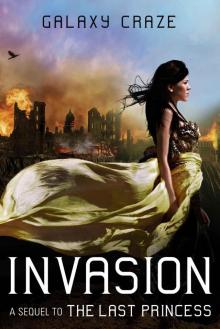 Invasion
Invasion The Legend of Parzival: The Epic Story of His Quest for the Grail
The Legend of Parzival: The Epic Story of His Quest for the Grail Acceptable Risk
Acceptable Risk Cell
Cell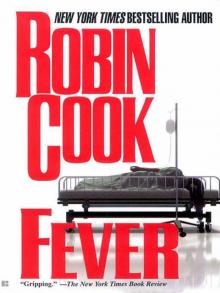 Fever
Fever Death Benefit
Death Benefit Contagion
Contagion Mindbend
Mindbend Coma
Coma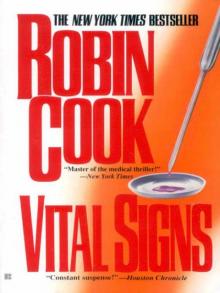 Vital Signs
Vital Signs Harmful Intent
Harmful Intent Critical
Critical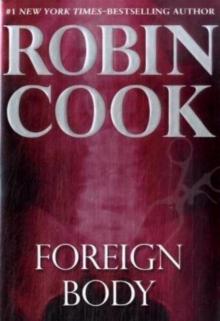 Foreign Body
Foreign Body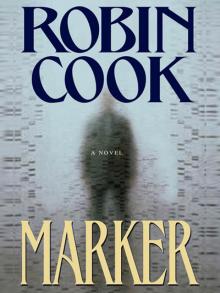 Marker
Marker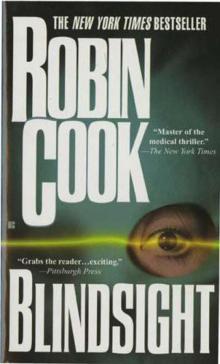 Blindsight
Blindsight Terminal
Terminal Sphinx
Sphinx Fatal Cure
Fatal Cure Host
Host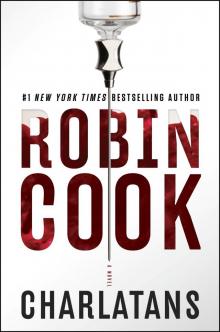 Charlatans
Charlatans Crisis
Crisis Vector
Vector Toxin
Toxin Abduction
Abduction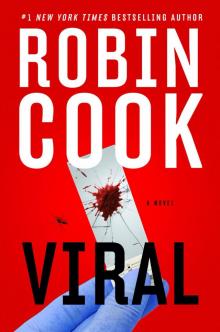 Viral
Viral Pandemic
Pandemic Outbreak
Outbreak Vector js&lm-4
Vector js&lm-4 Godplayer
Godplayer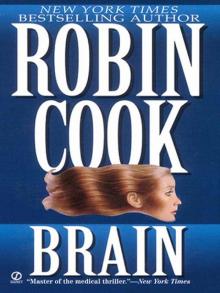 A Brain
A Brain Year of the Intern
Year of the Intern Outbreak dmb-1
Outbreak dmb-1 Cure
Cure Mortal Fear
Mortal Fear The Legend of Parzival
The Legend of Parzival Vital Signs dmb-2
Vital Signs dmb-2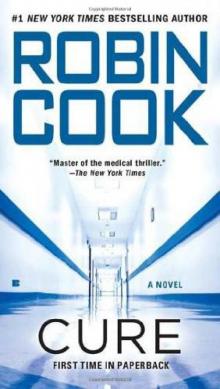 Cure (2010) sam-10
Cure (2010) sam-10 Blindsight sam-1
Blindsight sam-1 The Year of the Intern
The Year of the Intern Intervention sam-9
Intervention sam-9 Foreign Body sam-8
Foreign Body sam-8